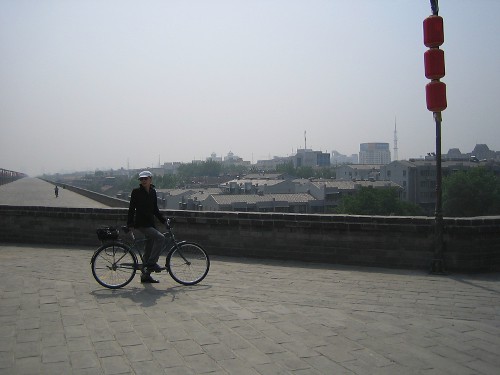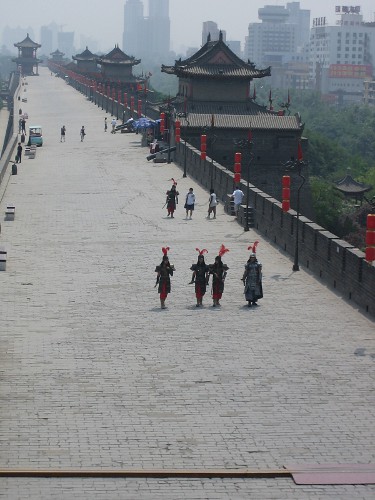
This plan had met storm of criticism in China yet if the developer is well connected, one can be sure to see the dismaying modernization of the city wall.
China has a habit of tearing down authentic old relics and build grandiose replica of the old, such as the Liulichang, a famous district in down-town Beijing that is known for a series of traditional Chinese stone dwellings housing that sells various craftwork, artistry, and antiques. It was one of Beijing's traditional old quarters. Yet, after a major modernization effort, nothing authentic was left. It is plain forgery.
The ancient city wall of Xi'an will be a theme park, one can find in any movie studio. Instead of the timelessness one might fee as in the following pictures,


You will see more of this, I'm afraid:

According to Wikipedia:
The fortifications of Xi'an, an ancient capital of China, represent one of the oldest and best preserved Chinese city walls. Construction of the first city wall of Chang'an began in 194 BCE and lasted for four years. That wall measured 25.7 km in length, 12–16 m in thickness at the base. The area within the wall was ca. 36 km². The existing wall was started by the Ming Dynasty in 1370. It encircles a much smaller city of 14 km². The wall measures 13.7 km in circumference, 12 m in height, and 15–18 m in thickness at the base.
Related posts on Art · 文化 · Kunst:
- Last Chance to See Terracotta Warriors in San Francisco Asian Art Museum
- Famed Terracotta Warriors and Their Intriguing Successors
- Ruins in Sanxingdui (Three-Star Mound) and Jinsha (Gold Sands), Sichuan, China





No comments:
Post a Comment